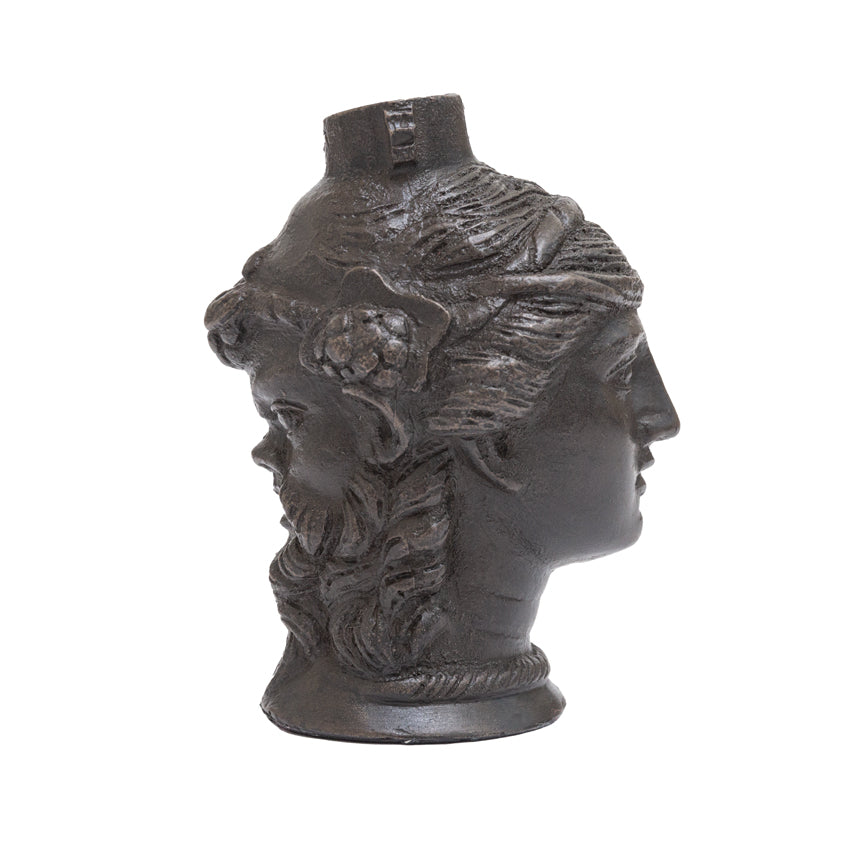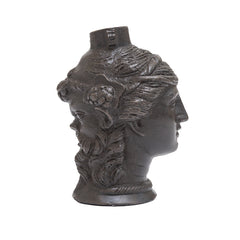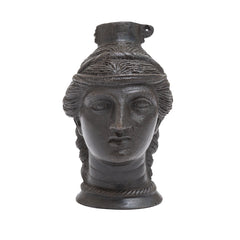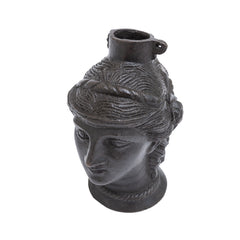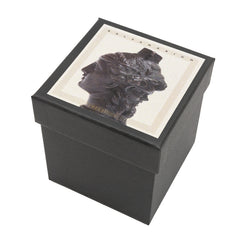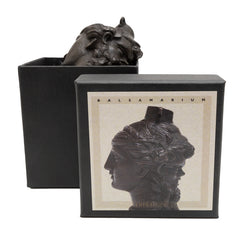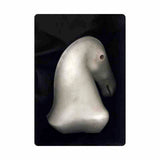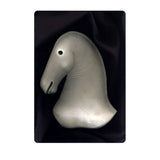Balsamarium - Replica of Freud's Bronze Figurine
£69.00
Exclusive to the Freud Museum, a unique replica of the bronze figurine that sits on Sigmund Freud's desk.
Bronze vessels of this type, called balsamariums, were made to hold perfume or oil. Commonly found in Etruscan tombs, they often take the form of a head, or as in this case, two faces joined at the sides.
Many balsamariums were designed to perfume the air, like a room air freshener. Freud’s vessel has a pierced lugs, or holes, to attach a chain and suspend from a hook.
The faces represented are a satyr and a maenad, the male and female followers of Dionysus, the Greek god of wine. Satyrs and maenads are mischievous creatures. The maenad is an image of idealized female beauty and the satyr, with his snub nose and strong eyebrows, epitomises ugliness.
Satyrs are amorous creatures, part-man, part-beast, and maenads symbolize impulse and abandon. Both heads are carefully modelled and finished. Freud was always interest in dual personalities and owned several two-faced figures. In 1899 Freud bought a stone Janus head, which is now missing from the collection. Janus was the Roman god of doorways and protector of the home, with two faces directed in opposite ways. This double-headed balsamarium sat on his desk in later years.
Dualism runs throughout Freud’s work, appearing in such fundamental theories as the pleasure principle verses the reality principle, sexual instincts verses ego instincts, libido verses aggression, and Eros verses Thanatos. Central to the image of the balsamarium is the notion of the basic bisexuality of all human beings, which Freud discussed in his fundamental work Three Essays on the Theory of Sexuality.
All busts are individually made and will vary slightly.
Dimensions:
Material: Resin
Height: 9cm
Width: 6.5cm
Weight: 215g
Packed in a black gift box

